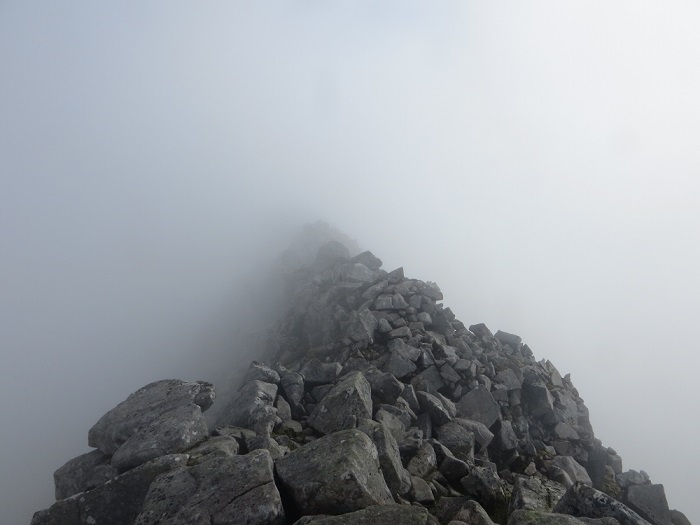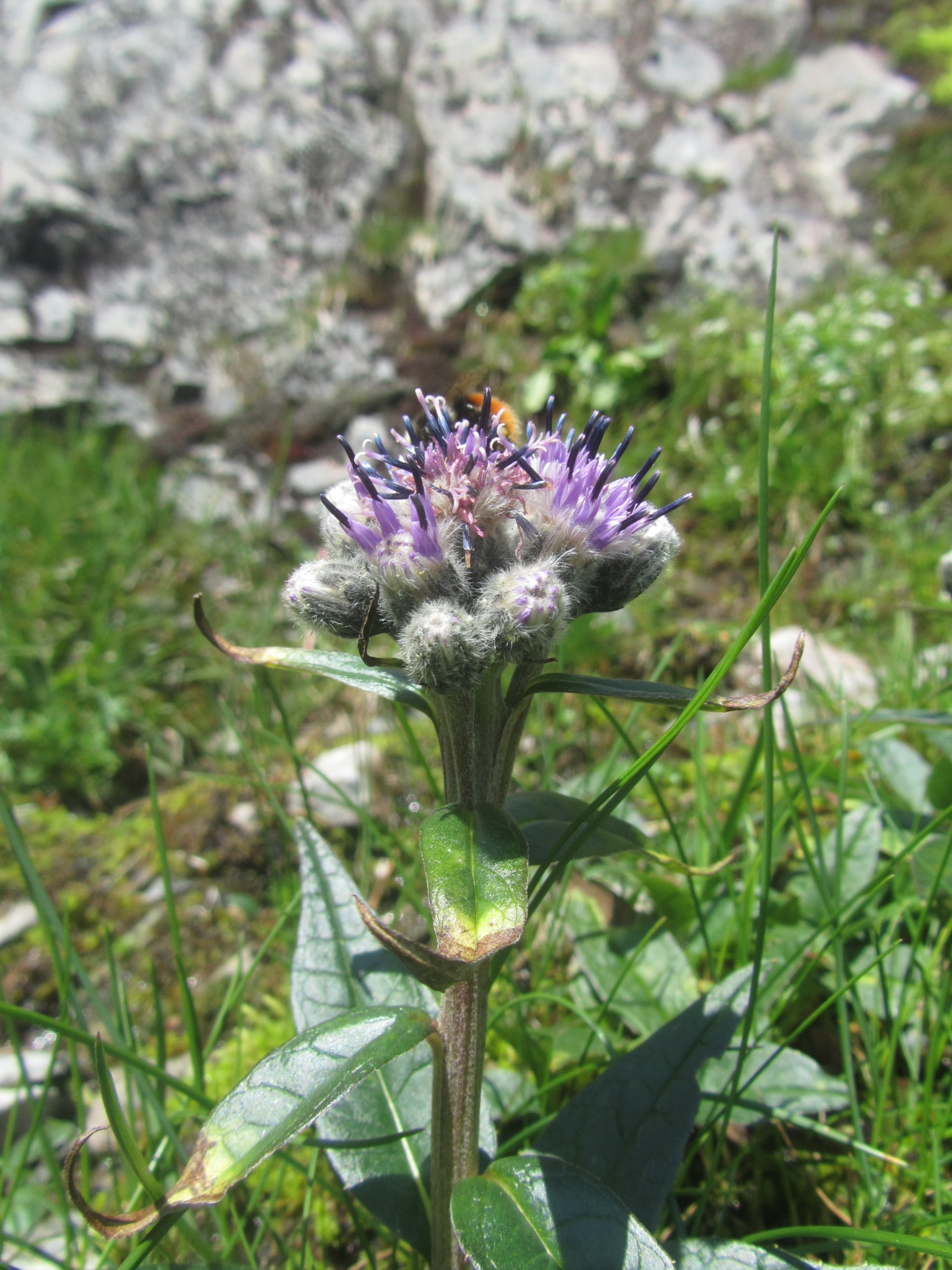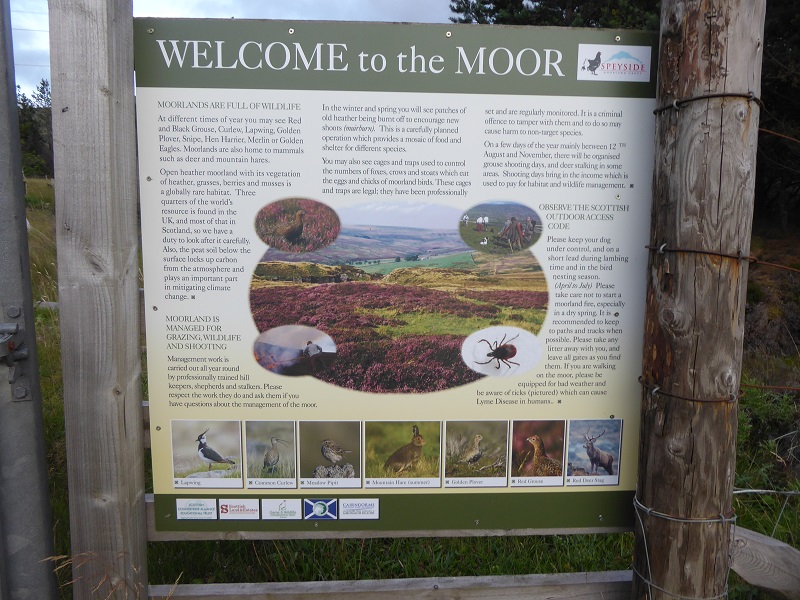
Out of Doors on Radio Scotland yesterday (see here) had a great piece on Network Rail’s attempt to close the “private” level crossing at Dalwhinnie (from 35.30), an attack on people’s ability to exercise their access rights. This was first covered in the Badenoch and Strathspey Herald two weeks ago (see here) and now become a national issue. The local community council, the Ben Alder Estate and the Ramblers Association all spoke on Out of Doors about the need for access routes across the railway to enable people to exercise their access rights. It was particularly welcome to see an estate factor speaking up for access rights. More about this soon.
But half an hour later (1.05.45) the programme featured Simon Milne, former Chief Executive of the Scottish Wildlife Trust and now Regius Keeper at the Royal Botanic Gardens in Edinburgh (RBGE), doing the opposite, undermining access rights. The first recorded ascent of Ben Nevis was by a botanist, James Robertson, and, on the 250th anniversary on 19th August, the RBGE is going to commemorate that ascent by going to look at plants – “finding out what is there” – and collecting DNA from from bryophytes and lichens, which play an important role in breaking down rocks to form soils. There was no mention of the extensive plant survey work that has already taken place on the Ben under the inspired aegis of the Nevis Landscape Partnership (see here), much of it helped by mountaineers. But then this is just a stunt aimed at attracting publicity for the RBGE.

In view of what Mr Milne said next, perhaps that publicity will re-bound?
Asked about the impact of human footfall on plants, Mr Milne stated:
“Human disturbance is always going to have an impact on the biodiversity of an area and that is why it’s really important that people stick to the tracks, not just up Ben Nevis but anywhere in the countryside, because that will minimise the disturbance, also for their own safety……………….so, keep to the tracks, don’t drop any litter and, if there is a call of nature do what they do in the Royal Marines take if off the hill……………..”.
Mr Milne’s words will have been music to the ears of those moorland owners who have been trying to get people to stick to the path, ostensibly to protect nesting birds but in reality to allow gamekeepers to carry on the annual slaughter of our wildlife out of sight of the public (see here). Two days after the “Glorious Twelfth”, instead of highlighting the real reasons why the biodiversity of Scotland’s countryside is being destroyed – muirburn plays a prominent part – the RBGE was claiming that it is visitors that are doing the damage. What’s more Mr Milne extended the argument for restricting access from people causing disturbance to birds to people disturbing plants.
There is no justification for this. The suggestion that people, just by walking over the land, cause disturbance and this is “always going to have an impact” is not true in any meaningful sense. It stems from a world view that sees people and nature as separate and that wildlife does not adapt to human presence. That view though suits certain landowners and gamekeepers: somehow their activities and presence never disturbs wildlife.
Generally, while its always possible a walker may trample a rare plant, the chances of them doing so are tiny because of the impacts of muirburn and grazing deer and sheep which are, unlike walkers, on the hill 24 hours a day, 365 days of the year and not just trampling but munching any flower they can see at the same time. The sad fact is there really is not much left to trample over.
This is not to deny that high numbers of recreational users can have localised impacts, particularly in places like the summit of the Ben. But those impacts are, unsurprisingly, almost always on paths (erosion exacerbated by lack of money for maintenance) and around them (litter). Neither are good reasons for telling people to keep to the path
Thankfully, most botanists don’t think like Mr Milne. They appreciate that Scotland’s access legislation secures them the right to go and look for plants in the countryside, whatever the landowner may say. Plantlife, for example, has produced several excellent guides to wildflowers for walkers, including one for people walking the tourist route up the Ben (see here). There is nothing in that about people having to keep to the path. Anyone with an interest in plants knows that you will rarely get to look at them properly unless you step off the path.
One of the reasons our access rights are so important and should be celebrated are precisely because they enable us to get “close to nature”. 18 years after the Land Reform Act created access rights, its staggering that Mr Milne and his ilk still don’t understand that. It is well past time that the Cairngorms National Park Authority (CNPA) acted to remove the dozens of the “Welcome to the Moor” signs that advise people to keep to the path.

Sadly, the CNPA will probably to use this pronouncement from Mr Milne as another reason to justify those signs. That is why it is so important that his views don’t go unchallenged.
Stretching the point there Kempe re the recommendation to stick to tracks.
Recommendation is that.
Remember you have responsible access, and if you did not well I would not be asked for example to avoid Golden Eagle eerie during nesting season within our national parks or nesting birds in our national nature reserves.
I am sure you aware of the possible legal outcomes if I were to ignore those recommendations.
Hey ho
You have no access rights to any birds nests. Within a national park or anywhere else. We do have access rights to every other square inch of outdoor Scotland outside of private gardens, Try harder Mr Sockpuppet.
I am pro access rights but it is not true to say that they exist for every other square inch of outdoor Scotland outside of private gardens – there are many exemptions such as airfields, railways, working quarries etc.
When I was on the Board of SNH, I asked Jeff Watson, then Director of the North SNH Region and an expert on eagles about walker impact on nesting eagles because at the time the RSPB were very concerned about the pair in the Lake District, at Haweswater, and trying to restrict access to paths below the eyrie. He told me that he had recently spent the day watching an eagle eyrie at Garbh Bheinn in Ardgour just above the main track used by walkers. He had watched numerous walkers walk beneath the eyrie completely unaware the eagles were there. The eagles of course saw all the walkers and carried on regardless. It is possible to disturb eagles from eyries, but that most usually results from deliberate actions, for example from egg collectors or gamekeepers (the chopped tree with the sea eagle nest in Glen Esk comes to mind). But hey ho! You say “Recommendation is that” but then two sentences down “I am sure you are of the possible legal outcomes if I were to ignore those recommendations” – a perfect illustration of why the keep to the path “recommendation” is the thin end of the wedge
Welcome to the Moor signs need ‘editing’. A permanent marker would do. “This is a landscape managed for killing – a landscape of Death” should suffice